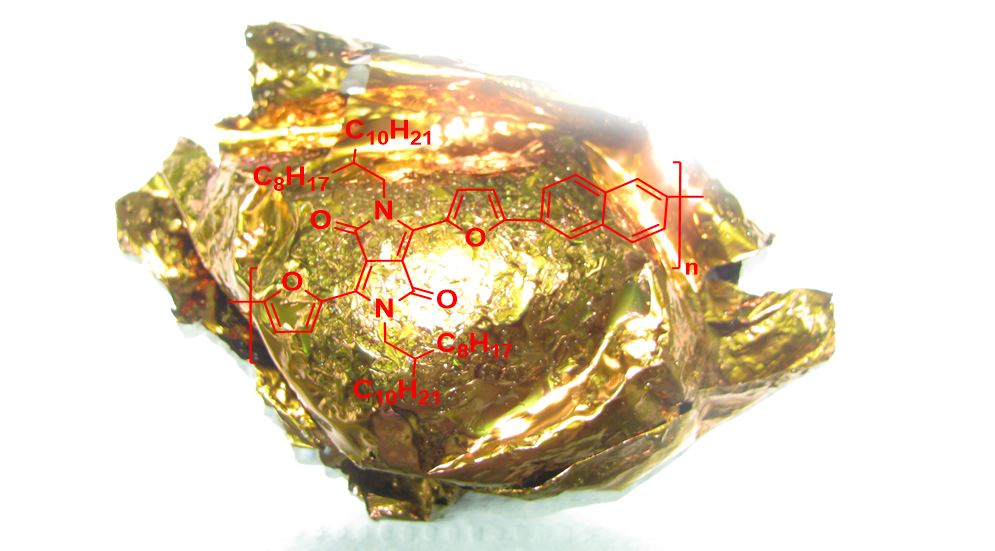Video Article Open Access
High Performance Organic Semiconductors for Photonics and Electronics
Prashant Sonar
1School of Chemistry, Physics and Mechanical Engineering, Queensland University of Technology, Brisbane, Australia
2Centre for Material Science, Queensland University of Technology (QUT), Brisbane, Australia.
Vid. Proc. Adv. Mater., Volume 2, Article ID 2021-02110 (2021)
DOI: 10.5185/vpoam.2021.02110
Publication Date (Web): 21 Mar 2021
Copyright © IAAM
Graphical Abstract

Abstract
Organic semiconductors are the focus of intense academic and industrial research because they are important functional materials for low cost printable electronic devices, particularly for transistors, displays, sensors and light harvesting devices. The active organic semiconducting materials are emerging due to their ink formulation capability, tunable light absorption/emission, interesting charge transport properties and relatively adequate HOMO-LUMO energies. Photophysical, electrochemical, morphological, and electrical properties of these semiconductors are primarily controlled via molecular engineering by selecting suitable conjugated blocks which can be either electron donating (donors) or electron accepting (acceptors). Conjugated π-functional semi-conductors constructed using fused aromatic building blocks is a suitable choice for high performance organic electronics devices.
In my talk, I will explain the various classes of donor-acceptor based semiconductors developed in my research group. In this presentation, the design, synthesis, optoelectronic properties, solid state interactions and device performance of novel donor-acceptor based high performance organic semiconductors will be discussed. Some low band gap materials could achieve high hole carrier mobility close to 1 to 4.2 cm2/V.s in p-channel transistors with low operating voltage (< 10 V) and small channel length (4 microns). Additionally, our rationally designed materials also exhibited highest gain in inverter type logic circuits, multi-bit storage in memory devices and selectivity of analytes using chemical sensors. Our recent attempts on hole transporting materials for high performance perovskite solar cell achieving more than 20% efficiency will be also discussed.
Biography
Prashant Sonar is ARC Future Fellow and Associate Professor in School of Chemistry and Physics and Centre for Material Science at Queensland University of Technology, (QUT), Australia. He was also appointed as Visiting Professor at School of Material Science and Engineering, Indian Institute of Technology, Kanpur from 29th November 2017 till 31st December 2017. He holds adjunct Associate Professor position with Griffith University, Australia. He performed his doctoral work under the supervision of Professor Müllen at Max- Planck Institute of Polymer Research, Mainz, Germany and was awarded his PhD in 2004 from Johannes-Gutenberg University in Mainz. Dr. Sonar moved to Swiss Federal Institute of Technology (ETH), Zurich, Switzerland for doing his postdoctoral research with Professor Schlüter from 2004 till 2006. From August 2006 till 2014, he was working as a Research Scientist at Institute of Materials Research and Engineering (IMRE), Agency of Science, Technology and Research (A*STAR), Singapore. Dr. Sonar received prestigious Future Fellowship (2013) from the Australian Research Council and was appointed as Associate Professor in July 2014 at QUT, Brisbane, Australia. At QUT, he established Organic and Printed Electronic Research group. Currently, he is serving as an Associate Editor of the journal Flexible and Printed Electronics, Material Research Express (Institute of Physics, London), Frontier in Chemistry and Energies (MDPI, Switzerland). Recently, he has been elected as Fellow of Royal Chemical Society (FRSC) and Foreign Fellow of Maharashtra Academy of Sciences (FFMAS). A/Prof. Sonar is interested in design and synthesis of novel π-functional materials (small molecules, oligomers, dendrimers, and polymers) for printed electronics, (OFETs, OLEDs, OPVs, OLETs, OPDs, and Sensors), perovskite solar cells, bioelectronics supramoleculecular electronic and wearable electronic applications. Dr. Sonar delivered 90 invited talks at various international conferences and institutes. He has authored or co-authored 153 peer-reviewed research papers in international journals (H-index-40 according to Google Scholar with total citations 6300) and filed 9 patents and patent application in regional and international level. Recently his two patents licensed to the multinational US based company.
Video Proceedings of Advanced Materials

Upcoming Congress



